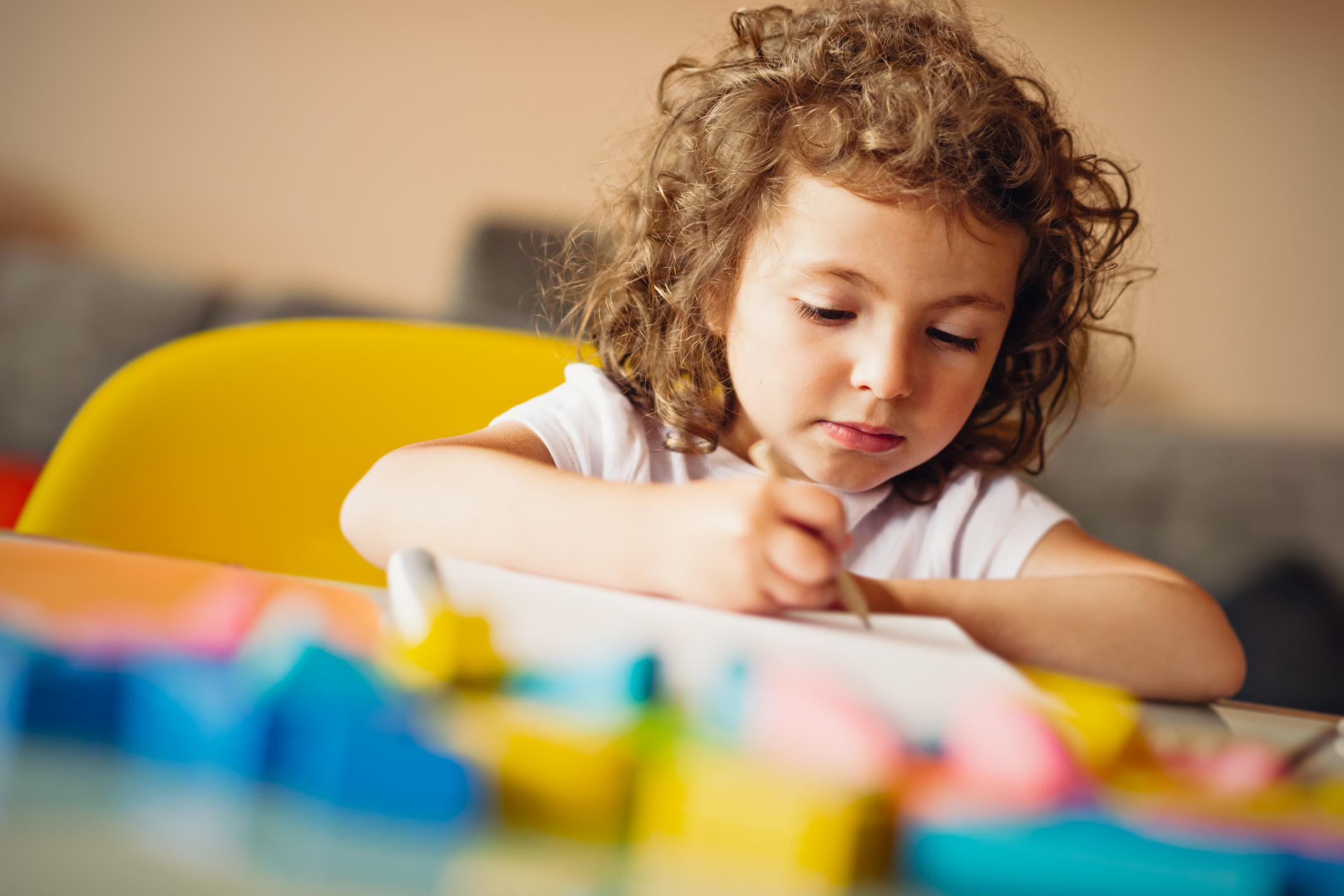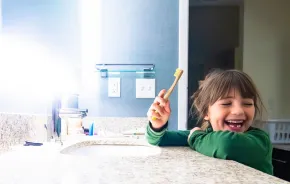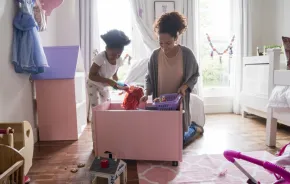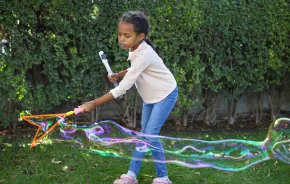
A vision board — also called a dream board — is a collection of images which represent your goals and dreams for the future. These collages aren’t just pretty to look at; they also function as visualization tools. Visualization, or imagining an activity, is a powerful exercise that helps you better see and plan for your goals. By seeing a vision board regularly, you engage in a visualization exercise without even having to think about it.
Plus, vision boards aren’t just for grown-ups! Creating vision boards together as a family can be a fun, inspiring activity. Not only will this project spark discussion; it’s also a great tool for both setting goals and imagining dreams.
Manila file folders work well as a base for the collages because the small size takes up less space. They can also stand on a nightstand like a large greeting card. For a family board, a large poster board works best, if you have the space to display the final product. Read on for directions on how to get crafting on this family project.
How you make it:
1. Set the scene. Ask everyone to put away their phones and other electronics. Have supplies ready and clear a space for creating, such as a kitchen table. You could even play soft music and light a candle to set a mood for dreaming!
2. Begin by brainstorming. Hand out paper and pencils and then ask family members to quickly think of the goals they have for the upcoming year. Write them down. Goals should be obtainable in a short period of time. For example, consider something short-term like “make better grades” or “improve in a sport.”
3. Break it down. Goals can also be broken down into different areas of life, such as: school (or work, for adults); health; relationships; spiritual; and fun. For each category, write down a specific action. For example, instead of writing “improve health,” choose an action you can take to improve health such as “drink one extra glass of water each day” or “go for a walk three times a week.”
4. Get the juices flowing. Ask kids questions about each category. For example, for the relationships category, ask if your kids want to spend more time with friends or perhaps make a new friend. Do they want to set a goal of spending more time together as a family, such as scheduling a game night or recipe night? For couples, perhaps aim to have a date night once a week. And don’t forget pets! Younger kids may say they want to play with the family pet more often.
School: The stated goal can be simple. Keep a log of when homework is due to stay more organized and avoid late assignments, or do homework for 30 minutes each day instead of saving it all for the weekend.
Spiritual: For families who pray, a goal of saying grace as a family at dinnertime is one idea. If you are not religious, perhaps set a goal such as “meditate for 10 minutes each day” or “keep a gratitude journal” where you write down five things you are thankful for each day could be goals.
Fun: In this category, ask kids about activities they would like to do in the upcoming year. Would they like to go to a park once a week or see a new movie each month? Consider including travel in this category. Is there a place they would like to visit?
Remember to try and not tell kids what goals they should choose. Offer gentle guidance by asking questions and offering suggestions, but don’t push even if you are dying for them to choose better homework habits as a goal! Kids need to own their goals and dreams for a vision board to work.
5. Dream on. The other part of a vision board can be about dreams. Dreams are things you or your children would like to be or do in the future. Does your son want to be a veterinarian someday? Do you want to travel somewhere internationally? In this category, you can write down your wildest dreams!
6. Start crafting. Once everyone has written a loose list, it’s time to start looking for images that represent those goals and dreams. Flip through magazines and cut out images that appeal to you. You can even cut out words or phrases. For example, if your child’s goal is to play with the dog more, cut out images of dogs. A beach image is a great reminder that you would like to travel to Hawaii. Be sure to have kids' magazines available. If you don’t find the exact image you want, you can always browse images on the internet and print those out.
7. Build the board. Once you have a stack of images, open a file folder and lay it open flat on your work surface. Arrange and rearrange images and words in a way that is pleasing to your eye. You could use the left side for goals and the right side for dreams if you wish. Using a glue stick, paste your images onto the file folder. Once all of the images are glued in place, you can use markers to add color or more words. Be sure and write the date on the back of each board and keep them each year. It can be fun to look back on what you wanted in the past, and to see what goals and dreams came to be.
8. All together now. Once everyone has created their own boards, consider doing a family vision board. If you have the space to display it, use a larger base such as a poster board (or a poster board cut in half) for this project. Go through the same steps as you did for the personal boards. This can be a fun way to collaborate as a family, and discover what every family member wants to do or achieve in the coming year.
9. Share your work! Be sure to place the boards where they will be seen by the owner at least once a day. Next to the bed, or even near the bathroom mirror are possible locations. Same goes for the family board. Be sure it is in a central location where everyone will see it and get inspired.











